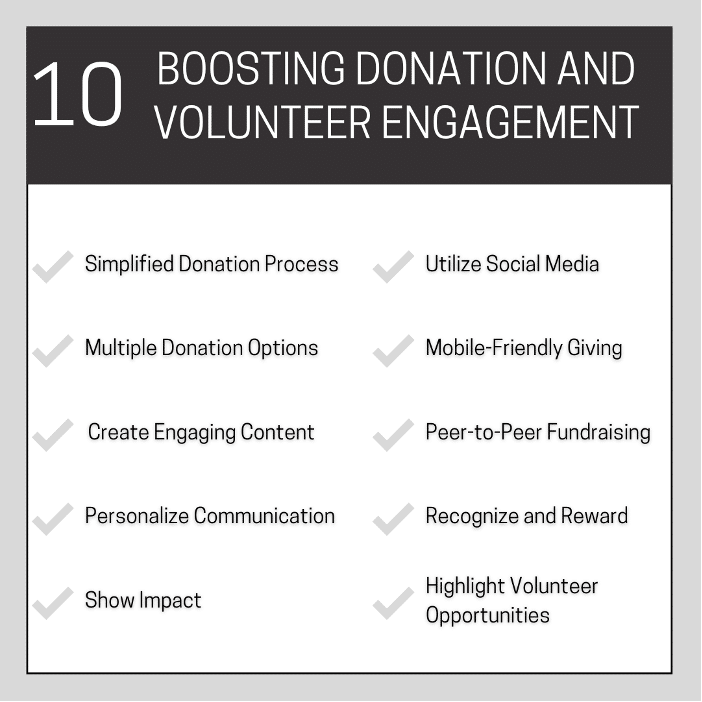A well-designed non profit website is crucial for effectively communicating your organization’s mission, engaging with your audience, and driving meaningful actions like donations and volunteer sign-ups. By incorporating key elements like a clear mission statement, user-centric design, compelling storytelling, and mobile optimization, you can create a website that not only resonates with your target audience but also amplifies your non profit’s impact. Let’s explore the top 10 tips for creating an outstanding non-profit website that will help your organization thrive in the digital landscape.
1. A clear mission statement and Goals
Your non profit’s website must prominently display a clear and engaging mission statement because it is the foundation of your organization’s operations and motivates people to support your cause. Customers want businesses, including nonprofits, to have a clear purpose statement. Make sure your mission statement is displayed prominently on your homepage for the best results when applying it to your website.
Use language that is succinct, impactful, and effectively conveys what you are saying to your audience. Emphasizing important targets and goals shows that the business is actively working to fulfill its mission. To improve the impact of your mission statement on visitors, choose a bold, eye-catching typeface or design feature that makes it visually striking and memorable.
2. Compelling Storytelling
Effective storytelling holds immense power for engaging supporters and fostering lasting connections with your cause through your website. Stories resonate deeply with people on an emotional level, making them significantly more memorable—studies show they are 22 times more likely to be remembered than facts alone. Furthermore, incorporating impactful storytelling on the best non profit websites has been shown to increase donations. To implement effective storytelling techniques, feature personal narratives and testimonials from individuals who have benefited from your organization’s work.
Utilize compelling imagery and videos to vividly illustrate these stories, bringing them to life for your audience. Highlight the tangible impact of donations through before-and-after comparisons, emphasizing the transformative effect of support.
3. User-Centered Design
Creating a user-friendly website is paramount to engaging visitors and encouraging prolonged interaction with your content. By focusing on user experience (UX) and intuitive navigation, you can simplify the process for supporters to access information and take meaningful actions. Research underscores the importance of this approach: studies indicate that online consumers are unlikely to return to a website after a negative experience. Additionally, websites that lack accessibility features may miss out on reaching potential users.
To implement user-friendly practices effectively, start by designing a clear and logical site structure with easy-to-navigate menus. Use descriptive headers and subheaders to guide users through your content seamlessly. Before launch, conducting comprehensive user testing with a diverse group helps identify and address any usability issues, ensuring your website is optimized to meet the needs of all visitors from the outset.
4. Mobile Optimization
It’s no longer merely beneficial but also essential for optimizing your website for smartphones and tablets in today’s mobile-first world. Since most online searches are now done on mobile devices, making sure your website is responsive is essential to drawing in and keeping visitors from a wider range of devices. Use responsive design strategies to do this, which will automatically modify the style of your website to fit various screen sizes and offer a consistent mobile surfing experience.
Optimize media and graphics to load more quickly on mobile networks. Improve usability by adding touch-friendly buttons and navigation. Make sure that your website works and performs similarly across a range of devices and browsers by thoroughly testing it.
5. Donation and Volunteer Engagement
Getting supporters to contribute to your cause, whether through monetary contributions or voluntary work, is essential to raising conversions and involvement. Prioritize a streamlined procedure that makes involvement easier to achieve. Start by placing calls-to-action (CTAs) that are obvious and visible on your website for both volunteer sign-ups and donations. To satisfy different supporter preferences, provide a variety of donation alternatives, such as one-time and recurring payments. Ensure that the online donation form is simple and secure, enabling participants to feel confident.

Source: Canva
6. Transparency and Accountability
Building trust with advocates is crucial to long-term success. Building trust and promoting continuous support is mostly dependent on showcasing your financial and operational openness. Putting these practices into practice requires a few crucial steps. First, to give clear insights into the operations and financial health of your company, post comprehensive annual reports and financial statements on your website.
To demonstrate your reputation and cooperative efforts within the community, highlight your affiliations and relationships with respectable groups. Provide thorough details on how funds are used, placing a particular focus on donor stewardship and accountability. Share impact reports and success indicators regularly to show the observable results of your followers’ contributions.
7. SEO and Content Strategy
Putting into practice a well-thought-out SEO and content strategy is vital for raising the discoverability of your non profit website among prospective donors by improving its exposure in search engine results. Start by carrying out in-depth keyword research that matches the goals and initiatives of your company. Make sure that all of the content on your website is optimized to include these specific keywords, especially the meta titles and descriptions.
To keep your content current and relevant, you should also start a blog and provide updates, news, and insights on your cause regularly. This will draw in organic traffic and inspire supporters and stakeholders to return. You may dramatically improve your non-profit’s internet visibility and accessibility to potential donors looking for causes similar to yours by regularly adopting these tactics.
8. Integrate Social Media
Effective social media incorporation can reinforce your message, involve supporters, and increase important website traffic for your non profit. To facilitate information sharing across social media networks, start by conspicuously placing social media sharing buttons on important pages and blog posts. Adding social network feeds straight to your website allows you to display real-time content and encourages interaction and immediacy.
To increase credibility and reliability, use social proof methods such as showcasing social media testimonials or follower counts. Provide stimulating, shareable material to inspire advocates to promote your message online, thus broadening your audience and affecting the community. By putting these strategies into practice, you may use social media to build a devoted online following and effectively promote the goals and projects of your non profit.
9. Security and Privacy
Building trust and upholding data protection standards require you to take great care in protecting the privacy and security of the information about your supporters. To begin encrypting data sent through your website and protect sensitive information from being stolen by unwanted parties, get an SSL certificate. Employ strong security measures, such as secure servers and encryption methods, to handle and preserve donor information securely.
To maintain transparency and accountability in your company’s data activities, keep yourself updated about relevant data protection laws, such as the California Consumer Privacy Act and the General Data Protection Regulation (GDPR). By giving these precautions top priority, you show that you are dedicated to safeguarding the personal data of your supporters and upholding their faith in your non profit’s functioning.
10. Regular Updates and Maintenance
Sustaining your online presence and offering a satisfying user experience depends heavily on keeping your website updated and well-maintained. To do this, plan out regular time slots for updating content and conducting website maintenance, making sure that the data is up-to-date and suitable for your target audience. To identify issues and improve overall usability, track significant performance metrics, and routinely get input from users.
To preserve work and user interest, interactive elements like forms and links must be tested and updated regularly. Additionally, to improve security and take advantage of new features, make sure your plugins and content management system (CMS) are up-to-date. You can guarantee that your non profit website stays responsive, dependable, and user-friendly by giving these procedures top priority. This will encourage continued involvement and bolster trust among your supporters.
FAQs
1. How do you build a website for a non profit?
Choosing a user-friendly platform, establishing goals, creating a clean layout, integrating role features, making sure the website is mobile-adaptable, and optimizing it for search engine optimization are all essential when creating a non-profit website.
2. What is the best website platform for nonprofits?
Due to its versatility, simplicity of use, and wealth of plugin choices that are tailored to the needs of non profit organizations—such as content release, event scheduling, and donation management—WordPress is highly recommended.
3. What is the most profitable non profit?
Non-profits’ levels of profitability vary greatly depending on their goals and methods of operation. Among those that are well-known for making significant earnings from thrift stores and charitable donations are Goodwill Industries and the Salvation Army.
Conclusion
A thoughtful approach emphasizing user experience, captivating content, and measurable impact is required to create the finest non profit website. Through the implementation of the techniques outlined in this article, non profits may create a powerful online presence that draws in supporters, encourages donations, and eventually promotes their cause. These strategies include clearly defining their goal, giving mobile optimization top priority, and including social media.

